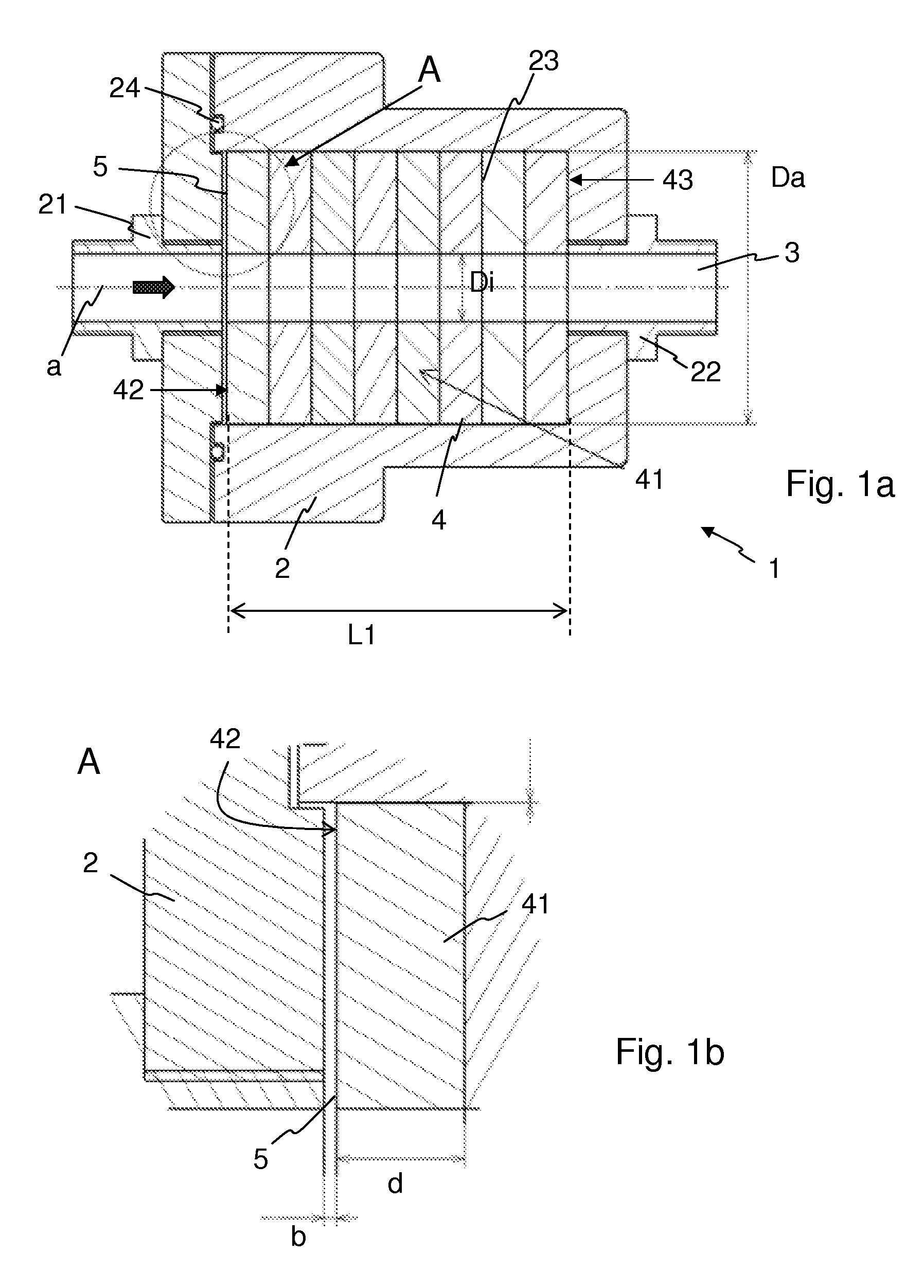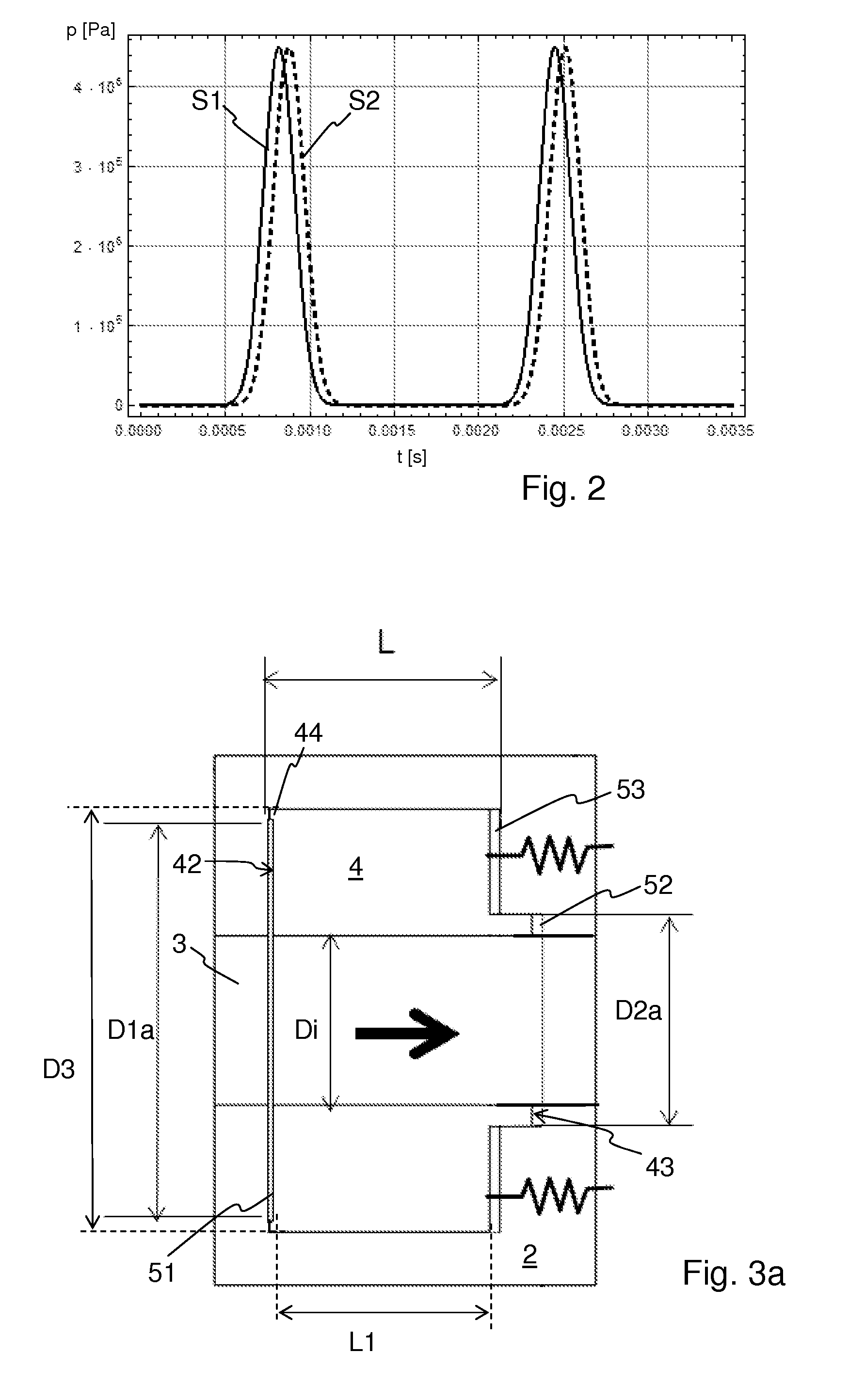Pulsation damper
a damper and pulsation technology, applied in the direction of shock absorbers, vibration dampers, pipe elements, etc., can solve the problems of pressure compensation in the flow channel, impair the damping, etc., and achieve the effect of reducing hydraulic energy, reducing pressure, and operating very reliably and cost-efficiently
- Summary
- Abstract
- Description
- Claims
- Application Information
AI Technical Summary
Benefits of technology
Problems solved by technology
Method used
Image
Examples
Embodiment Construction
[0028]In the following, the invention will be explained by taking as an example an engine oil circuit in a motor vehicle. The pulsation damper 1 is insertable downstream of an oil pump into the engine oil line. In this connection, the pressure peaks caused by the oil pump for supplying the engine oil have to be damped. However, the pulsation damper 1 is also suitable for other fluids and applications in which pressure pulsations occur which have to be damped.
[0029]FIG. 1a shows a pulsation damper 1 according to a first embodiment in a sectional view. The pulsation damper 1 features a housing 2 rotationally symmetric around an axis “a” which is insertable as intermediate piece into a fluid-guiding line. In this connection, the connecting pieces 21, 22 of the fluid-guiding line feature the same internal diameter as the fluid-guiding line. The housing 2 is metallic, for example made of aluminum. In the housing 2 is formed a hollow space 23. The hollow space 23 is of cylindrical design....
PUM
 Login to View More
Login to View More Abstract
Description
Claims
Application Information
 Login to View More
Login to View More - R&D
- Intellectual Property
- Life Sciences
- Materials
- Tech Scout
- Unparalleled Data Quality
- Higher Quality Content
- 60% Fewer Hallucinations
Browse by: Latest US Patents, China's latest patents, Technical Efficacy Thesaurus, Application Domain, Technology Topic, Popular Technical Reports.
© 2025 PatSnap. All rights reserved.Legal|Privacy policy|Modern Slavery Act Transparency Statement|Sitemap|About US| Contact US: help@patsnap.com



